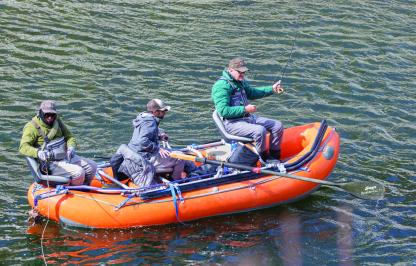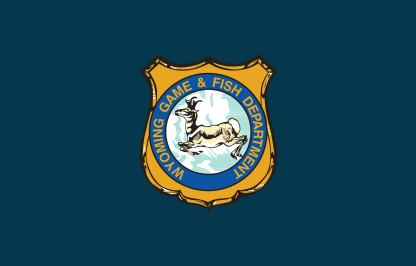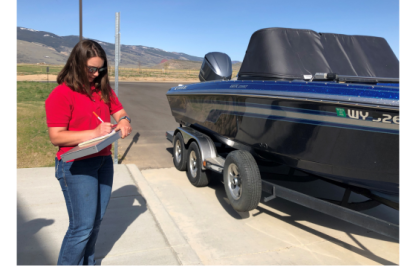By Andrew Nikirk, Sheridan Fisheries Biologist
When you think of Wyoming, you certainly think of majestic mountains, rolling prairie and plains, picturesque landscapes, and wide open spaces. But when you venture out to take advantage of Wyoming’s lakes, rivers, or reservoirs, do you ever wonder, when it’s hot outside, if you should be fishing?
Catching and releasing a fish when water temperatures are high can lead to unintended mortality. Wyoming has had pretty decent water years since the long drought of the early 2000s. Over the last couple of years however, we have experienced below normal snowpack, less frequent rains, and above normal temperatures; resulting in decreased stream flows, elevated water temperatures, and forest fires.
Fish, especially trout, are fairly fragile creatures that can suffer delayed mortality following release by an angler. This is exacerbated by how long the angler plays the fish, location where the fish was hooked (corner of the mouth or swallowed), and any other extenuating circumstances while releasing the fish (e.g., accidentally dropping, removal of their slime-coat, taking too long to take a photograph etc.).
Periods of high water temperature add substantial additional stress to the fish. Most anglers do a great job releasing the fish they catch with the utmost care, but anglers can reduce or eliminate potential mortality by voluntarily not fishing during periods of elevated water temperatures or changing the way they land and handle fish.
When water temperatures approach 70 degrees Fahrenheit, trout become stressed due to low oxygen levels. As water temperatures approach 75 degrees, most trout are unable to recover from being caught and released by anglers.
For example, in August 2021, Muddy Guard Reservoir #1 was at minimum pool and was experiencing very high water temperatures. Temperature readings were as high as 75 degrees and maximum pool depth was measured at just 13 feet.
The 27-acre pond, 16 miles southwest of Buffalo, is one of the premiere fisheries in the Sheridan Region. It is managed to offer anglers trophy-sized Snake River cutthroat and rainbow trout and protecting the fishery during this time was a priority. Through news releases and signs, we asked anglers not to fish the reservoir until late September when temperatures began to decline and the response was very positive!
In addition to temporarily not fishing during periods of extreme heat, anglers can do the following to lessen unintentional mortality of fish:
● Fish for trout before noon while the water temperature is cooler.
● Carry a pocket thermometer to monitor the water temperature.
● If the water temperature is at or above 65 degrees, consider keeping what you catch within the regulations.
● If the temperature is 70 degrees or higher, do not attempt to catch and release trout.
● Land fish as rapidly as possible to reduce exhaustion stress.
● Keep the fish in the water as much as possible.
● Do not squeeze the fish or place fingers in the gills.
● Remove the hook gently. If hooked deeply, cut the leader.
● Flies and lures are recommended whenever many trout are being caught and released.
If a fish is exhausted and cannot hold itself upright, and if regulations allow, consider having it for dinner because the fish has a poor chance of surviving.



